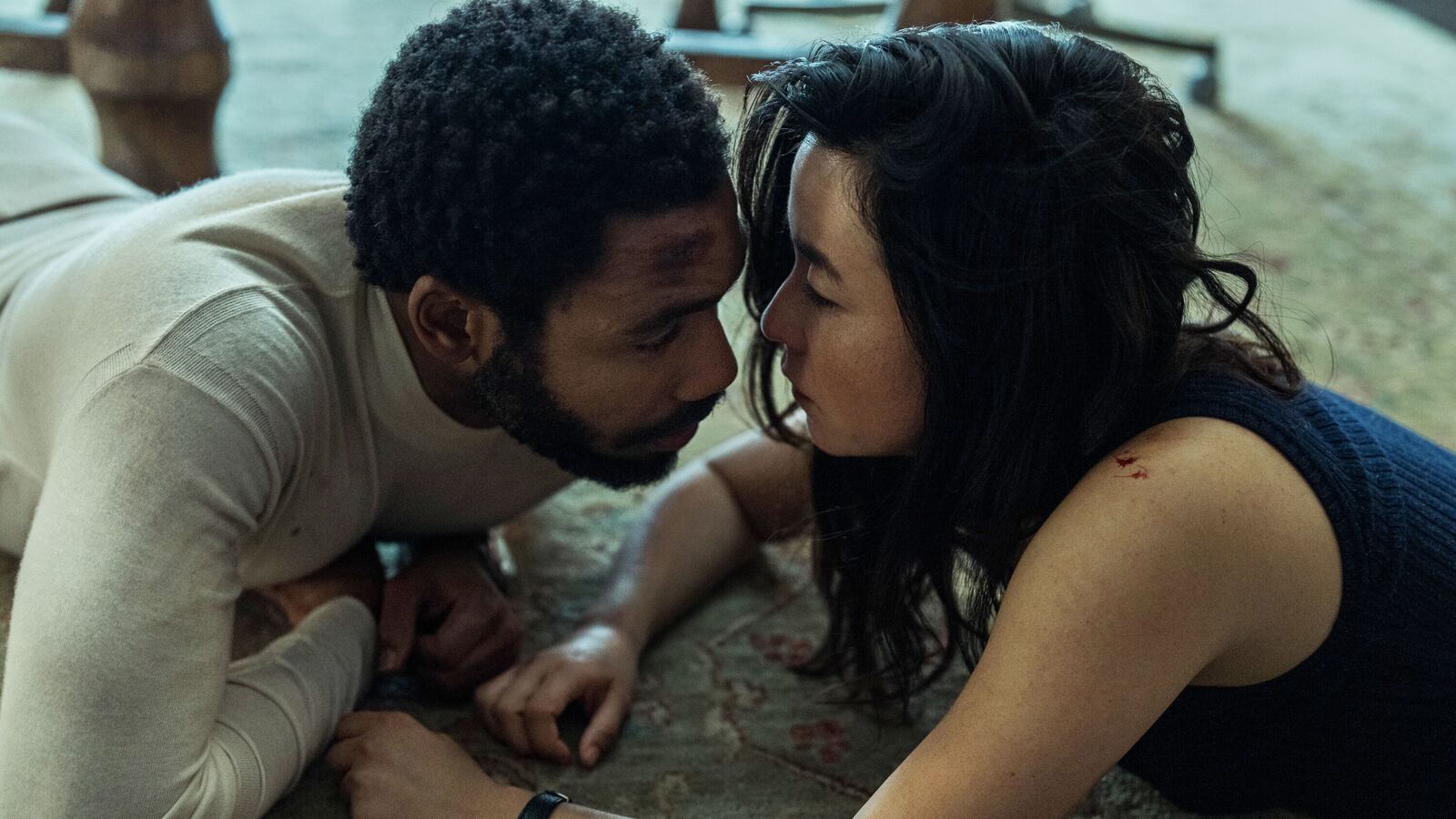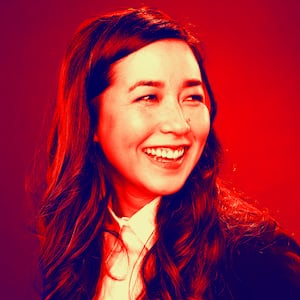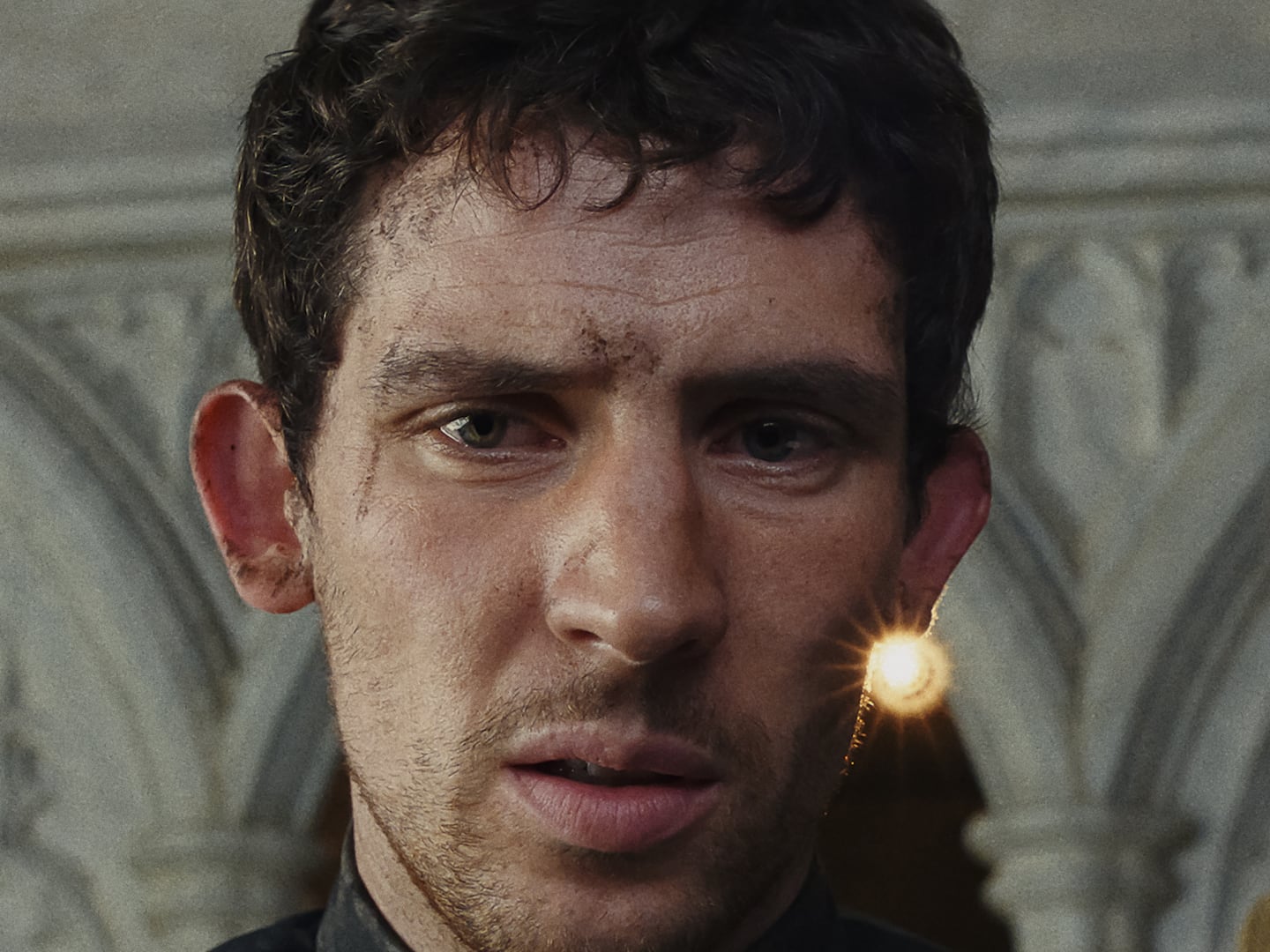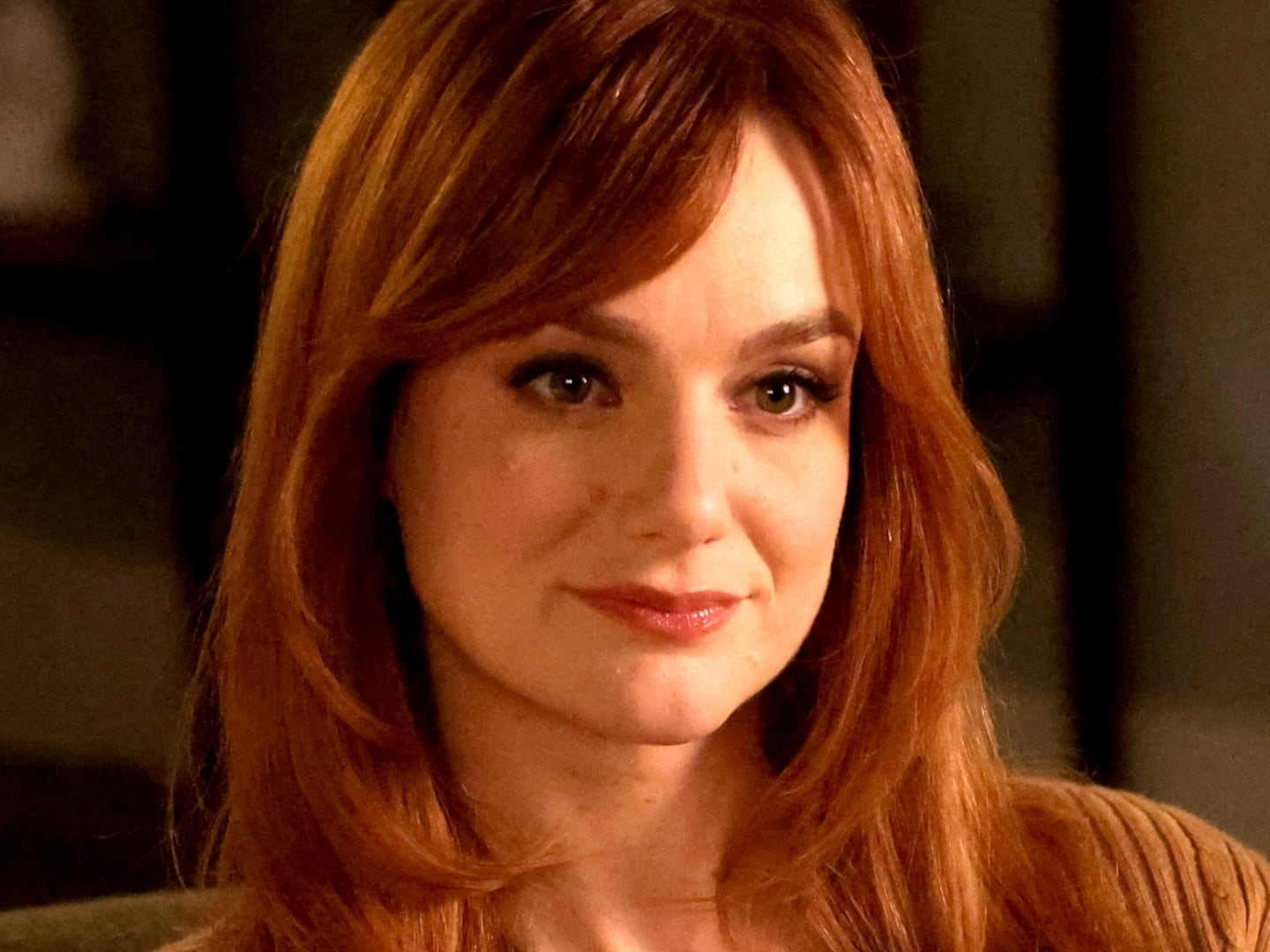There’s nothing about Mr. and Mrs. Smith, the Doug Liman film from 2005, that screams “remake me!” The action-romance isn’t particularly good or beloved; arguably its most lasting cultural impact is birthing “Brangelina,” one of the juiciest celeb relationships (and most brilliant portmanteaus) of our generation. Without any nostalgic fondness for or interest in the film itself, Mr. and Mrs. Smith seemed better off left in the era of trucker hats and tracksuits. Even Brad Pitt and Angelina Jolie seem eager to sweep that part of their lives under the rug—for many very good reasons.
So when Donald Glover announced that he and co-creator Francesca Sloane were revamping the film as a TV series, the response was a mixture of confusion and, in some cases, dismissal.
“Once we were announced, we saw the comment, ‘Who needs this show?’” wrote Sloane in an open letter to critics, ahead of the Prime Video series’ Feb. 2 premiere. “We didn’t blame them. In a culture heavily inundated with remakes, this was a reasonable reaction. No one would need a show that retold the same blockbuster movie.”
But the strength of 2024’s Mr. and Mrs. Smith, Sloane explains, is that it does exactly the opposite: This is a reimagining, not a reboot. In fact, Glover has openly admitted that he had never even seen the movie when he floated the idea of doing their own spin to his collaborator. Instead, their series borrows the basic dynamic—a man and woman who know nothing about each other try to maintain a marriage—and the action (and sexy) accouterments, but little else.
There is espionage and palpable chemistry, to be sure. But the focus of Sloane and Glover’s version of the story is the relationship between a married couple born from extraordinary circumstances. Funny, thrilling, and romantic in equal measure, today’s Mr. and Mrs. Smith is a textured, enthralling, wholly original product. Jury’s out: The 2005 film’s got nothing on the 2024 show.

Maya Erskine in Mr. & Mrs. Smith
David Lee / Prime Video / Amazon MGM StudiosThe Daily Beast’s Obsessed recently spoke to Sloane about what the series does borrow from Liman’s film, casting Paul Dano as a “hot neighbor,” and how the brilliant Maya Erskine—who replaced original star Phoebe Waller-Bridge—is the real key to the series’ success.
This interview has been edited and condensed for clarity. (Warning: spoilers follow, including of the finale and surprise guest stars.
Donald Glover brought the idea of doing a version of Mr. and Mrs. Smith to you. How did you approach reworking that story?
We wanted to make something that we would want to watch, and that felt natural for us to be the people to create it. When we started talking, it was in 2020, and I had just very freshly gotten married. I was somebody who thought I would never get married, and Donald thought the same [about himself], and now we are both married. We were questioning why we arrived at that place, and it was very heavy on the mind. That sort of informed a lot of the questions we had in making the show—like, “What is loneliness? How does that fuel us to want to connect?”
I think the idea of using marriage as a metaphor in the way that the movie did is really smart—these two people, who have to be expert liars in order to be good at their jobs, happened to be married, when honesty is supposed to be the policy that makes marriage worth a damn. Exploring that version of telling the story just felt like the most natural thing for us, in terms of the philosophical state of our minds at the time, and we ran with it from there.

Donald Glover and Maya Erskine in Mr. & Mrs. Smith
David Lee / Prime Video / Amazon MGM StudiosEach episode of the season mirrors a different phase of a relationship—from the first date to the rough patch. Where did that structure come from?
When you’re trying to take a big swing and make something surprising, occasionally, doing something classic and straightforward feels like the best way to then get away with that. And there’s nothing more classic than the tale of “boy meets girl.” But we wanted to do it in a unique way, in the sense that they're also having to do these ridiculous missions. That’s part of what informs their closeness or their insecurities, and how they reveal themselves to each other.
Stephen Glover, Donald’s brother, kept reminding us, “Man, it’s about the relationship at the end of the day. Come back to the relationship.” And that really just became the anchor. It was the thing that made a lot of sense. It made it feel relatable and allowed for character exploration—I think that's what we wanted to make, at the end of the day.
It definitely feels that way—even when other characters pop in, the show still remains hyper-focused on John and Jane. That includes the finale, which is all about John and Jane intimately revealing themselves to each other in the face of mortal danger. How did you land on that ending?
We came up with the ending first. It was one of the things that we knew we wanted to lead to, and everything else informs that. … I think one of the first things that we came up with was this idea of wanting [John and Jane] to be very cagey with each other. And what's cool about doing something that feels, in some ways, fantastical and like a little kid's daydream of playing “spy” is that there is magic in the tools that you can use.
We always knew we wanted them to have to reveal all the ugliness and reveal all their vulnerabilities with truth serum. We then wanted that to get interrupted, so that you don't just stay in that moment. We bring up the height in action again. Now, [we asked ourselves,] how do we do that? We'll bring back our two lunatics—the other, Mr. and Mrs. Smith [played by Wagner Moura and Parker Posey]—to come and disrupt things all over again.
I was so surprised to see them again. I actually said, “What the heck? They were behind this the whole time?”
I love that. I think any reaction where we can get a “What the heck are they doing?” is a win for me.
Also, once [we cast] Parker Posey, I was like, “As much Parker Posey as possible. Give Parker Posey all the spinoffs. Give Parker Posey everything.”
Speaking of performances, I was really taken with Maya Erskine as Jane. I loved her in Pen15, and this is obviously so different from that—yet she’s so well-cast in this role. But I know that Phoebe Waller-Bridge was originally attached. How much did Jane change once she left the project?
When we worked with Phoebe, it was really, really early days in terms of the story. We hadn’t really figured out who Jane was yet. So when we had to find our [new] Jane, I remember talking to all different people—[director] Hiro Murai said Maya. I said Maya. Donald said Maya. My sister said Maya. Carmen, our casting director, said Maya. She was on the tip of everyone’s tongue, and it was because we wanted someone surprising, somebody that had this vulnerability and that could really bring to life this underdog feeling.
[Maya is] also such an incredible writer, and she has such an interesting point of view, and we loved collaborating with her also. She really helped inform the character of Jane, really figuring her out. And then, because of the casting, it very organically became this underdog story between the two of them—in terms of their pasts and identities and awkwardness. It helped give us their characteristics as spies. Maya unlocked the whole thing for me.
I feel like we spend more time with Jane and her perspective too. Was she meant to be the lead character from the beginning, or did that shift because of Maya’s performance?
That was always the intent. In fact, Donald was so beautifully supportive of that. I think that was one of the main reasons he wanted to collaborate with me in doing that. While it was early days, we did have a writer's room full of women—and they happened to be all women of color, all just based on merit. The only men in our room were Donald and his brother, Stephen.
Jane really was our James Bond. Her arc was really what mattered.
That definitely comes through. I felt like it was so telling that, when we finally find out her real name is Alana, it’s a dramatic moment, versus when we find out that John’s real name is Michael, the reveal is almost tossed off and flippant. Jane’s evolution is what’s most important here.
Yeah, I just feel like so many times, especially in the past 10 years, when you're telling stories cloaked in action, you fall into the trope of the woman playing “the man.” It was really exciting to try to mess around with that in a different way.

Donald Glover in Mr. & Mrs. Smith
David Lee / Prime Video / Amazon MGM StudiosAnother discussion surrounding the show before its release was the potential pushback. It’s a reimagining of the movie, and you noted that some early critics were unhappy that you were making major changes from it. Did that feedback affect you while working on the show?
I’m a nervous and anxious person, and then Donald’s sort of like my big brother, who’s so cool, legitimately, about everything. So the combination of that together is sort of a funny peanut butter and jelly sandwich. But I think, at the same time, we wouldn’t have wanted to do this if we weren’t self-aware enough to understand that we were going to have that [pushback].
Being aware of the fact that people are going to have a strong reaction one way or another, and then hopefully doing something that is satisfying and surprising because of that reaction—I think that was part of the draw, if I’m completely honest.
There’s plenty of other things for people to talk about with this show beyond its source material. You’ve got great guest stars, from Parker Posey to Sharon Horgan and John Turturro. Did you write those parts specifically for certain actors?
Some of the characters we wrote with actors in mind—we always knew we wanted Michaela Coel. She’s a friend of Donald’s, and for that part it needed to be somebody that would intimidate the hell out of Jane, and who is more intimidating and exceptional than Michaela Coel?
Outside of that… Paul Dano was one of the first people we cast, and I think that one was a head-scratcher for people initially, because his name on the show and in the scripts is “Hot Neighbor.” I think people were thinking, “We need a Marvel stud,” and I had to keep explaining, no, he has to be hot to Jane. That’s a very specific type of person… Once we got Paul, he was so great that we put him in more of the episodes, and then he kind of set the tone.
Down the line, we cast Eiza Gonzalez and Alexander Skarsgard, because we wanted two of the most beautiful people we could possibly think of to play what would be the more typical idea of a John and Jane Smith, and then, moments later, try to turn that on its head.
I think my favorite guest star was Sarah Paulson, who plays John and Jane’s couples therapist. That episode felt like a real turning point for their relationship and the show, and she was so crucial in setting the tone.
We knew that we needed somebody who could just really put those two in their place, especially Jane, and Sarah is a legend. She’s also wickedly funny in the most unassuming way, which is my favorite kind of funny. She felt so real—like I know that therapist really, really well.
The concept of [having them do] couples therapy was an Easter egg and nod to the film. I thought one of the things that was brilliant about the original movie is that the two of them are in these therapy sessions, but they’re not able to actually be honest because they have to still keep up their covers. The only way for therapy to actually be beneficial is if you're able to get in there and say all the actual things. [The 2005 film’s John and Jane] are trying to do something to move forward in their relationship that could be healthy, but they're shackled by lies, so even that doesn't work for them.
Was there another episode that you were really excited for people to see once the show premiered?
We really were excited about this idea of the first kiss. In action movies, there's always a moment where a bad guy is approaching, and the man has to take the woman and whisk her against the wall and kiss her so they can blend in and become suddenly invisible. My goal was to come up with the most unusual, bizarre, kooky way of showing a first kiss between two people that I could possibly muster. So the dog scene with John Turturro in Episode 2—I’m really excited to see how people digest that.







